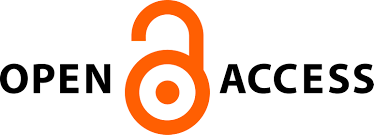POST-SURGICAL REHABILITATION OF A SEMI ELITE SOCCER PLAYER UTILISING A BIOMECHANICAL AND NEUROCOGNITIVE APPROACH BY A SPORTS CHIROPRACTOR A CASE REPORT
##plugins.themes.bootstrap3.article.main##
Abstract
Background
This case study underscores a sports chiropractor's comprehensive rehabilitation approach, integrating neurological rehabilitation into the post-surgical recovery of an ACL (anterior cruciate ligament) repair. Through the incorporation of neurocognitive training, specifically directed at enhancing visual processing and anticipatory reactions, the primary objective is to mitigate motor errors and minimise the susceptibility to secondary injuries.
Conventional protocols for managing ACL injuries may neglect the on-field neurocognitive demands imposed on athletes. Inadequate cognitive training may render athletes less equipped to manage biomechanical stresses and navigate the dynamic environment of a match, potentially resulting in compensatory movements and an elevated risk of reinjury.
Case Presentation
The patient, a 35-year-old female semi-elite soccer player, sustained a left knee injury during a game. Despite a normal orthopedic examination, subsequent MRI revealed extensive damage, including a complete ACL rupture, leading to successful ACL reconstructive surgery. The objective of this case study is to illustrate how the integration of biomechanical and neurocognitive rehabilitation can diminish the likelihood of reinjury and facilitate a successful return to high-level athletic performance.
Conclusion
The rehabilitation program prioritised incremental biomechanical loading and neurocognitive training, employing an external focus of control to mitigate compensatory movements. Throughout the intervention, the patient's capabilities were consistently evaluated using the BalanceTrackS system, enabling adjustments to the rehabilitation plan. Standardised questionnaires were also administered at various intervals (one week, one month, three months, and six months) to assess progress and determine readiness for a secure return to play.
##plugins.themes.bootstrap3.article.details##
Authors retain copyright and grant the journal right of first publication and allow others to share the work with an acknowledgement of the work's authorship and initial publication in this journal.
Authors are able to enter into separate, additional contractual arrangements for the non-exclusive distribution of the journal's published version of the work (e.g., post it to an institutional repository or publish it in a book), with an acknowledgement of its initial publication in this journal.
This journal provides immediate open access to its content on the principle that making research freely available to the public supports a greater global exchange of knowledge.



